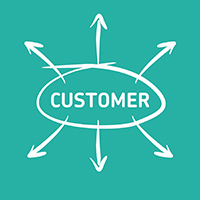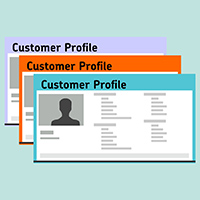Podcast: Play in new window | Download | Embed
Today’s Guest
Bryan Eisenberg is a Co-Founder of Buyer Legends. He is also an author of six books.
This is the 62nd session of Smart Brand Marketing.
Bryan lives in Austin Texas. He specializes in helping companies put the customer first. That’s easier said than done. I wanted to go in-depth into how to build a customer profile, how a regular company can mimic Amazon and what are the actual steps we can take to speak directly with the prospects we want to do business with.
We accomplished all that so press play.
TOPICS DISCUSSED
- The theme that ties all of Bryan’s books together
- What makes a good story
- Biggest lessons learned from Amazon
- What we can do right now for biggest ROI
- How to describe our customer’s personas
- The different methods of buying
- Hacks for getting around Austin and best restaurants
Enjoy!
How to Make Your Customers Your Friends
The customer experience is what makes and breaks any kind of business whether online or in the real world. You could spend a lot of time convincing your customers that you are there to fulfill their needs but you won’t be seeing any observable change in your business’s performance unless you find ways to deliver on it.
Treating your customers as friends is something that will take a lot of effort. However, it does make for a rather effective marketing strategy even in the online world.
The Anatomy of a Good Story

The first step in establishing good relationships with your customers is in determining the way you plan the content you want for them to consume. Storytelling plays a key role in your content marketing strategies and, sad to say, many marketers get this aspect wrong.
To correct that, let’s take a look at the focal point in any content marketing’s story: the Hero.
Who’s the main character in the story of your ads? To who does the main story revolve on? If you say that the main character in your story is your products and services, you would be surprised to know that you are wrong.
A story that focuses too much on the products you are offering runs the risk of becoming too impersonal. It takes away the human factor which results in the entire ad coming off as too marketing-heavy for your audience. And do keep in mind that audiences today can smell from a mile away if marketers are about to do a hard sell on them.
Instead, your story should focus on an entirely different hero: your audience. The story should revolve around their problems, concerns, and issues which would then be answered by the other elements of the story.
For example, if your business offers residential cleaning solutions, then the focal point of the story in your ads should not be about the types of products you offer but, instead, how your audience can get through this predicament if they ever encounter it. In a sense, the entire story turns from one where your products are the highlight to one where people solve actual problems with your products as support.
How to be like Amazon

As of now, Amazon.com is hailed as one of the best online platforms when it comes to providing great customer experiences. Much of this comes from the way they deal with their customers as well as the mentality behind their services and products.
Mind you, it took quite a while for Amazon to build such a community but, eventually, they did it while also setting up a new standard for online customer service.
The best part about Amazon’s model is that it is compatible with almost every other business out there regardless of size and type. As a matter of fact, Amazon’s customer service philosophy is based on only 4 pillars.
- 1. Customer-Centric Focus

Simply put, the entire focus of all your products and services should be directed towards providing for the needs of your customers. Always remember that your business survives on being needed on by its market.If you focus too much on, say, income, you run the risk of alienating your customer base as you stop thinking about their needs but on YOUR needs. In most cases, what you need and what they need will be different from each other. - 2. Innovation

What you must understand is that the needs of a customer never stays exactly the same every year. They might use products differently today or there are new technologies that give rise to new needs. What it means is that your business’s relevance to your customers tends to change from time to time and it’s your duty to adapt and innovate on your customer’s behalf.This is where your customer-centric philosophy comes into play as it allows you to gather data on how your consumers behave in regards to your products and what they are looking for in the market. You can even use this part to find out why your products and services are not getting the results you have set for them. They goal here is to always tap to those needs, whatever they are. - 3. Action

Anybody can come up with a good idea for a service or business model. The struggle here is to actually execute that idea. Execution is what makes or breaks a good idea as you can find that some of your ideas are not exactly that sustainable or even practical.The point is this: act on whatever you just planned if you want to see results. After all, ideas are useless if they are confined to group meetings and agreements. They have to be translated into something tangible if you want them to bring in the results you desire. - 4. Optimization

Once you find that your ideas do work, the next step is to improve on them by adding new features or correcting any then-unforeseen problem. If they don’t work, then it’s back to the drawing board for you. What is important here is that you continue to improve on whatever changes you have implemented whether it is replacing them with new ones if they don’t work or adding improvements here and there if they do.Optimization is also not just a one-time affair, it should be a part of your business’s culture that starts from the management and goes beyond every department it has. By finding what can be changed, you can go one step further in eliminating waste in your business’s operation while also improving the customer experience.
Customer Profiles: Will They Help You?

Since we are talking about building better relationships with your customers, we must also understand how they think and feel. Customers can come with their own set of personality traits, preferences, and spending habits which means cataloguing every customer that ever came or will come into your business is going to be difficult. However, you can make this easier on your part if you can come up with a list of customer “personas” that your business often has to deal with.
What are personas, exactly? Without getting too psychological on this, let’s have an example.
Supposed that you are about to have dinner with some famous fictional character like, say, John McClane from Die Hard.
Or how about you found a wallet on the middle of street and you go through the inside for any kind of ID. You later find out that that wallet actually belongs to Kanye West and you have to meet him to return it.
Without even meeting these people, you already have an idea as to how they will conduct themselves in your your presence, how they reacts to whatever you will do, and what they might say in response to whatever you just said.
This is the same for customer personas as they give you a point of reference when creating scripts for your content. How would your audience react to your content? Would they respond well if you frame your thoughts this way? Would they like if you feature more than one of your products in your content?
The personas you have crafted will actually answer these questions in their own way which gives you an idea as to how your audience would react to your content and, in turn, giving you someone to empathize with.
How Do I Develop Customer Profiles?
Every company has their own set of customer profiles which means that what you will have is going to be very different from other business, even your competitors. The process of creating one, as such, will be different from company to company but it usually boils down to three things.
- 1. Determining Your Company’s Goals

What exactly does your business want? What kind of services and/or products does it want to offer? In what markets does it want to operate? Your business’s goals will actually form the mold that will shape your customer personas in the sense that it gives you a direction as to how they will be made. - 2. Market Research

Once you have identified the direction you will take, you must then use every surveying tool you have at your disposal. Things like social media trackers, 3rd party market statistics, market segmentation charts, interviews, polls, and other media driven platforms can give you an insight into the behavior of your customers from the way they react to certain media to the brands they are most loyal to. - 3. Breathing Life into Your PersonasAfter you have every bit of possible data gathered, you can then start on segmenting these information into your different personas. You can do this in 3 different categories:
- Demographics: This covers that market’s age, location, gender identities, household or family size, income, and other personal qualifiers.
- Personal History: This will cover your company’s history with these kind of demographics. Have you tapped into these markets before? Is this market something you have yet to venture into? How you will answer this will determine the number of categories you can make for your personas as far as personal history is concerned.
- Expectations: This covers your customer’s needs and expectations when it comes to your product. Their needs will be different according to how they will relate to your brand, amongst other things, and will change from time to time. As such, you need to constantly monitor this aspect when referring to your customer personas.
Once you have completed the process, you will have an “imaginary customer” of sorts that you can refer to whenever you and your business will come up with new marketing strategies. Just keep in mind that these personas do not accurately represent your target markets. However, they do give you a sense of direction in creating products, services, and advertisements that hopefully will resonate with your target market the most.
How Do People Buy?
Aside from knowing how your customers might think and feel, you also need to know how they might purchase your products and services. With all of the advancements in technology comes new spending habits but, for the sake of simplicity, every customer out there can be categorized in 4 spending habits.
- Avid Buyers – These people make it a point to be the first at everything. They know the best deals online and are usually the first to try out new things. You might also know them by their other name: shopaholics.
- The Emotional Buyer – Everyone has their own way of dealing with stress and the emotional buyer does so with their wallets. The Emotional Buyer buys things for a number of reasons like they are upset, or are worried, or are filling in a need, Whatever the need, the emotional buyer is always looking for one thing in every purchase: instant gratification.
- Impulse Buyers – The rise of online shopping has also allowed for a lot of people to become impulse buyer. The way to target impulse buyers is simple: feed on their sense of urgency. You might put up your products as limited offers or you might use the “other items you might be interested in” feature used by some online shopping sites.
- Deal Hunters – These buyers are not in it for quality per se but to save up on their cash. Deal hunters are not exactly in it for the products but for finding the best kind of deal for whatever money they have on hand. They can be patient, cautious, and strategic, only partying with their money once they feel secure that they have the best deal in front of them.
The spending habits above are not limited to one shopper as people can jump from trait to trait depending on what they are looking for. It’s up to you to mix and match strategies in order to establish working relationships with these kind of buyers for your business.
In Conclusion
It’s easy to think of customers as nothing more than walking wallets where you can draw money from. However, making them feel as invested in the business as you do tends to benefit you in the long-run.
This does not mean that you entirely forget about your income since you need to earn money too in order to last in the market. It’s just that you find a balance between your needs and your customer’s needs to establish a relationship with them.
What other strategies are you aware of that can build relationships with your customer base? If you have one, then head on to the comments section below for further discussions!
RESOURCES
- Bryan Eisenberg (Website)
- Fixing The Washington Post With Tech – Jeff Bezos (Article)
- Car2Go (CarSharing)
- Austin Restaurants: Torchy’s , Lick Honest Ice Cream, Uchi
THANK YOU FOR LISTENING!
To get more SBM content sent directly to your device as they become available, you can subscribe on iTunes or Stitcher!
Also, reviews on iTunes are extremely helpful and greatly appreciated! I read each and every one of them, and feel free to share your URL there so I can contact you later on and say thanks!
If you enjoyed this episode you may also love listening to:



